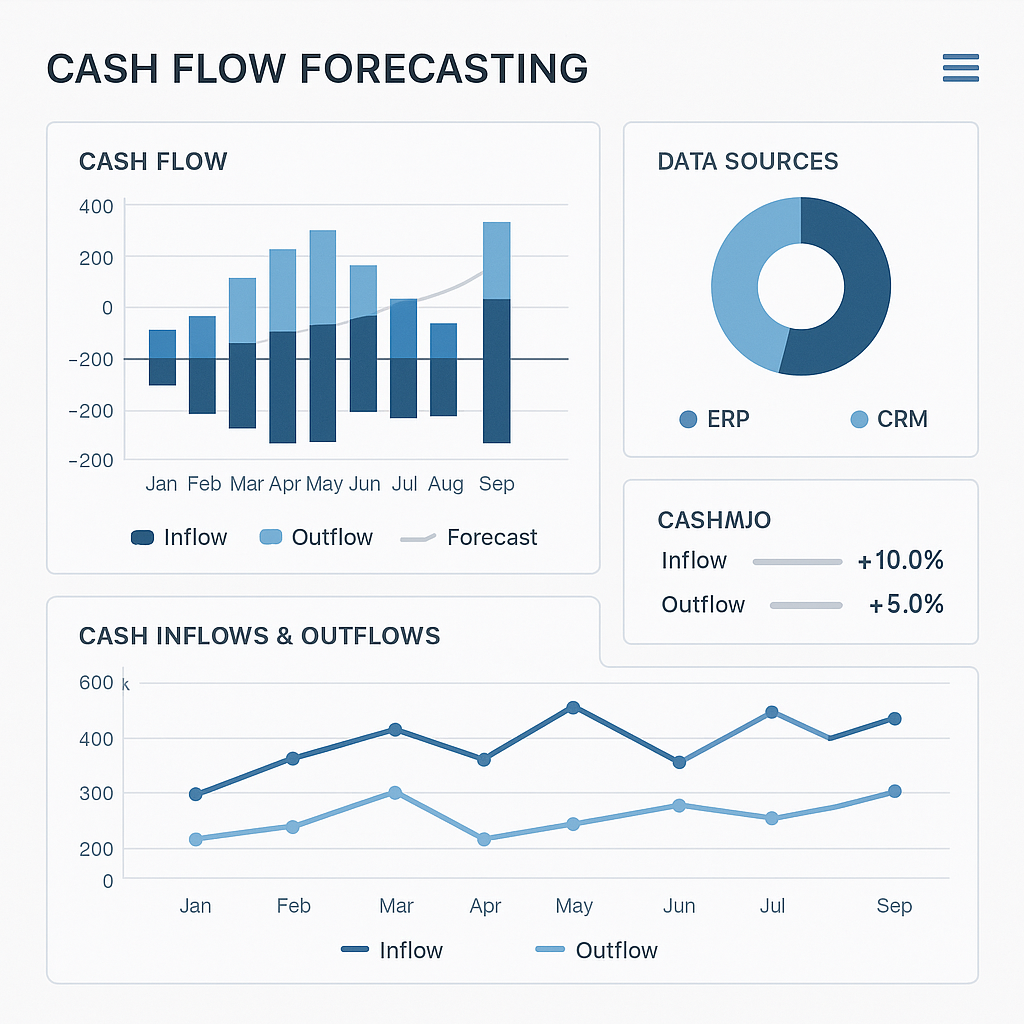
Table of Contents
Is there any financial process more critical, yet more chronically challenging, than cash flow forecasting? For many organizations, the process remains a painful exercise in spreadsheet wrangling, reliant on static assumptions and siloed data. The result is often a forecast that’s outdated the moment it’s published, leaving the business navigating by looking in the rearview mirror.
A perspective forged through my years of navigating enterprise financial systems suggests a more robust approach is needed. Effective forecasting isn’t just a modeling challenge; it’s an architectural one. It requires architecting a system that unifies data, embraces dynamic drivers, and provides the visibility needed for proactive liquidity management.
The Foundation: An Integrated Data Architecture
The accuracy of any forecast is fundamentally limited by the quality and breadth of its data inputs. Traditional forecasting processes often rely exclusively on general ledger and historical cash balance data. This is a dangerously incomplete picture.
A modern forecasting architecture must integrate data from a wider array of sources to be truly effective. This includes:
Accounts Receivable (AR) Systems provide modeling for the timing and probability of customer payments based on historical behavior, not just contractual due dates. Accounts Payable (AP) Systems deliver a clear view of vendor payment schedules and term compliance. CRM Systems contain the sales pipeline, which serves as a powerful leading indicator of future cash inflows. Integrating pipeline stages and win probabilities provides a more forward-looking view than just historical sales data. HR/Payroll Systems enable accurate forecasting of payroll, commissions, and other significant employee-related cash outflows.
Insights distilled from numerous system deployments show that organizations with an integrated data foundation consistently produce more reliable forecasts. This requires a deliberate integration strategy, often leveraging middleware or an iPaaS solution, to create a unified data set for the forecasting engine.
Moving to a Driver-Based Model
Once the data is integrated, the modeling approach itself needs to evolve. Simple trend-line extrapolation of historical cash flows is a fragile methodology. A more resilient approach is driver-based forecasting.
This involves identifying the key operational metrics that actually drive cash inflows and outflows and building the forecast around them. For example, instead of just forecasting “revenue,” a driver-based model might forecast new customer acquisitions, average contract value, and churn rates. These operational drivers, which are often more predictable at a granular level, then flow through the model to generate the financial forecast. This approach not only improves accuracy but also makes the forecast more actionable, as the business can focus on influencing the specific drivers.
The Role of Technology: EPM and BI Platforms
Modern Enterprise Performance Management (EPM) platforms, like Workday Adaptive Planning or Anaplan, are designed for this kind of sophisticated modeling. They provide the necessary tools to integrate diverse data sources, build complex driver-based logic, and manage multiple forecast versions and scenarios.
Alongside these, Business Intelligence (BI) tools like PowerBI or Tableau are essential for visualizing the forecast and its underlying drivers. An effective cash flow dashboard shouldn’t just present a single-point forecast. It should allow users to explore different scenarios, understand key assumptions, and drill down into the operational data that underpins the projection.
Embracing Uncertainty with Scenario Modeling
A single-point forecast is a fragile thing in today’s volatile world. What happens if a major customer pays late? What if a key supply chain cost doubles? Resilient forecasting embraces this uncertainty through scenario modeling.
An effective forecasting system should allow finance teams to easily model these alternative futures and understand their impact on liquidity. This transforms the forecast from a simple prediction into a strategic risk management tool. It prepares the organization to respond to potential disruptions with a pre-vetted plan, rather than reacting in the moment.
Longitudinal data and field-tested perspectives highlight that organizations that regularly practice scenario-based forecasting demonstrate greater agility and make better capital allocation decisions during periods of market stress.
Building a modern cash flow forecasting capability is a journey. It requires moving from isolated spreadsheets to an integrated systems approach. It demands a shift from simple extrapolation to driver-based modeling. And it requires a cultural change, from seeking a single “correct” number to embracing a range of possible outcomes. Organizations that make this journey transform their forecasting process from a reactive reporting exercise into a proactive, strategic advantage.
For further discussion on these strategic frameworks, please connect with me on LinkedIn.